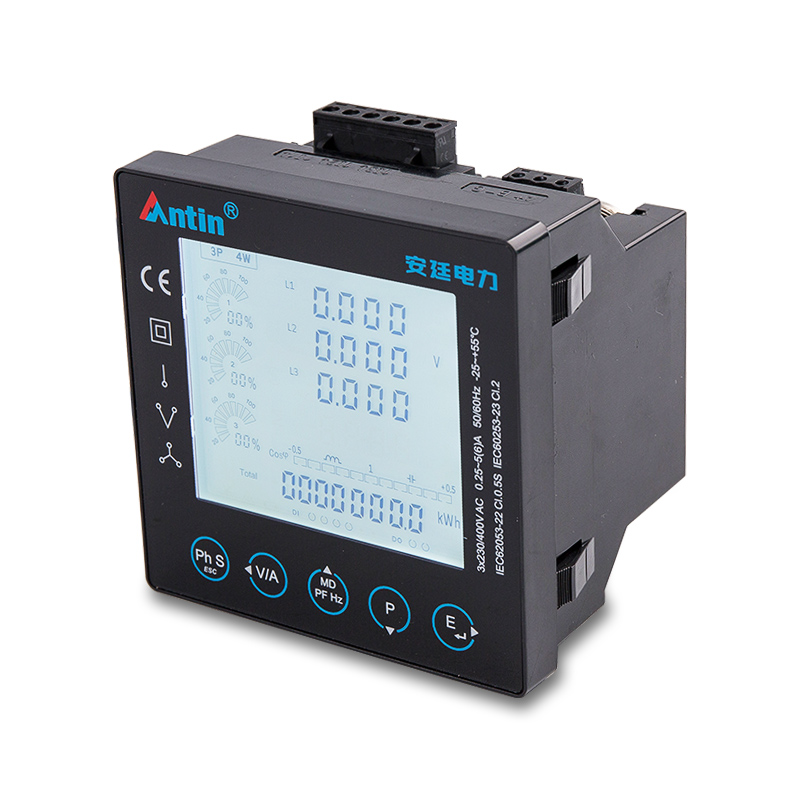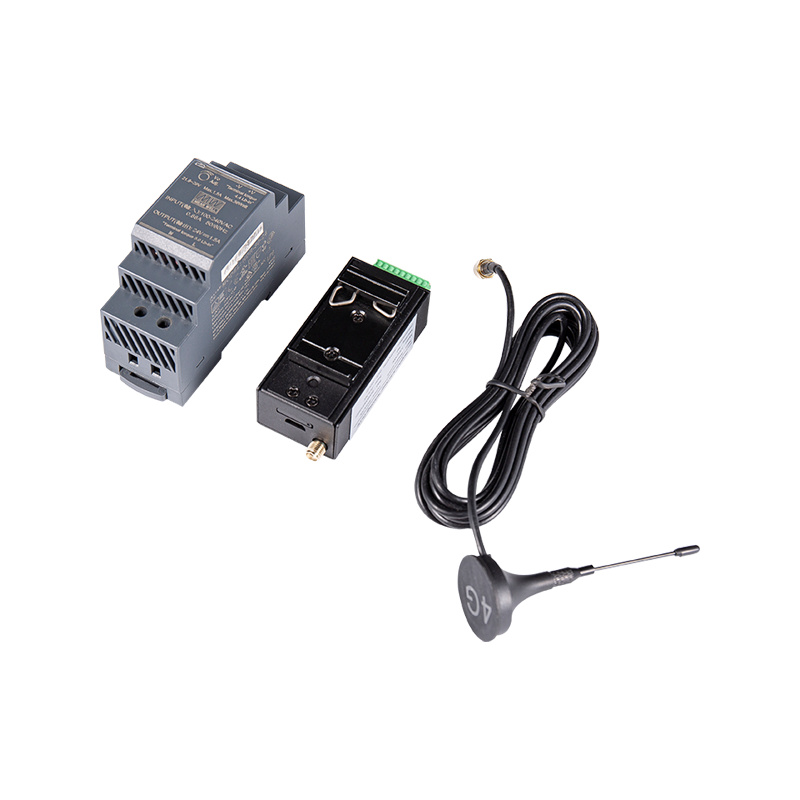The Invisible Detective of Energy Waste: How a Power Quality Meter Saves Enterprises Massive Costs
In today's competitive industrial and commercial landscape, optimizing operational efficiency is paramount. While businesses meticulously track direct costs, a significant financial drain often goes unnoticed: poor power quality. Voltage sags, swells, harmonics, and transients are not just technical terms; they are silent profit killers. They lead to equipment malfunction, premature aging, increased maintenance costs, and, most crucially, skyrocketing electricity bills. This is where the power quality meter transforms from a simple measuring device into an indispensable financial tool. This advanced instrument acts as a diagnostic expert, uncovering the hidden inefficiencies within your electrical system that are costing you money. By providing a clear, data-driven picture of how, when, and where energy is being used and wasted, a power quality meter empowers facility managers, energy auditors, and engineers to make informed decisions that directly impact the bottom line. This article will serve as a comprehensive guide, demonstrating how investing in power quality analysis is not an expense but a high-return investment into operational resilience and financial savings, helping you turn your electrical system from a cost center into a model of efficiency.
Unmasking the Hidden Costs of Poor Power Quality
Before deploying a power quality meter, it is essential to understand the mechanisms through which poor power quality translates into financial loss. The electrical energy supplied to your facility is ideally a perfect sine wave at a stable voltage and frequency. However, in reality, this ideal is corrupted by a variety of issues originating both from the utility grid and from internal equipment. These disturbances cause equipment to operate less efficiently, drawing more current to perform the same amount of work, which is directly reflected on your electricity bill. For instance, an electric motor subjected to voltage unbalance will experience increased heating, leading to higher energy consumption and a reduced lifespan. Furthermore, phenomena like harmonic distortion cause current to flow in non-productive ways, measured as reactive power, which many utilities charge penalties for. Without a power quality meter to identify these issues, you are essentially paying for energy that does no useful work and for the accelerated degradation of your valuable assets. The meter provides the forensic evidence needed to pinpoint these invisible costs, categorizing them and quantifying their financial impact, which is the critical first step toward remediation and savings.
- Increased Energy Consumption: Equipment operating inefficiently due to power quality issues draws more current, leading to higher kWh consumption on your utility bill.
- Utility Demand Charges: Short-term peaks in current (kVA demand), often caused by equipment startups or harmonics, can significantly increase the demand portion of your bill, which is often the largest cost component.
- Reactive Power Penalties: Utilities charge industrial and commercial users for reactive power (kVAR), which does no real work. Harmonics and poor load characteristics increase reactive power.
- Equipment Failure and Downtime: The cost of replacing failed components, lost production during downtime, and emergency maintenance labor can be astronomical.
- Reduced Equipment Lifespan: Continuous stress from power quality issues like voltage variations and harmonics leads to premature aging of motors, transformers, and capacitors.
5 Long-Tail Keywords for Targeted Power Quality Search
To effectively navigate the world of power quality analysis, it's helpful to understand the specific terms that professionals search for. These long-tail keywords represent targeted queries with clear intent, often from users who are closer to making a decision or seeking a specific solution. Focusing on these terms allows for a deeper connection with the audience. The following five keywords are selected based on their relevance to cost-saving, moderate search volume, and lower competition compared to broader terms, making them ideal for targeted content strategy and SEO.
- how to reduce demand charges with power quality meter
- power quality meter for energy savings
- detecting harmonic distortion with power analyzer
- power quality audit cost benefit analysis
- identifying voltage sags to prevent equipment damage
How a Power Quality Meter Works as Your Energy Detective
A modern power quality meter is a sophisticated data acquisition system that goes far beyond simple voltage and current measurement. It continuously samples the electrical waveforms at a very high speed, capturing millions of data points per second. This raw data is then processed using advanced algorithms to calculate a comprehensive suite of parameters. The meter analyzes fundamental power values (kW, kVAR, kVA, PF), but its true value lies in its ability to diagnose dynamic events and steady-state disturbances. It captures transient voltage spikes that can fry circuit boards, records the duration and depth of voltage sags that disrupt sensitive processes, and performs Fourier Transform analysis to break down current and voltage waveforms into their harmonic components, revealing the level of harmonic distortion. Crucially, it time-synchronizes all these measurements, allowing you to correlate a specific power event (e.g., a voltage sag) with a consequence on the production floor (e.g., a PLC reset). This forensic capability to record the "what," "when," and "where" is what makes it an indispensable detective for uncovering the root cause of energy waste and equipment problems.
- High-Speed Waveform Capture: Records the actual shape of voltage and current waves, essential for analyzing transients and inrush currents.
- Event Triggering: Can be set to automatically record data when a parameter (e.g., voltage) exceeds a user-defined threshold.
- Harmonic Spectrum Analysis: Decomposes the waveform to show the magnitude of individual harmonic frequencies up to the 50th or 63rd order.
- Power and Energy Logging: Tracks consumption (kWh), demand (kW), and reactive power (kVAR) over time to identify trends and peak usage periods.
- Data Logging and Reporting: Stores vast amounts of data and generates detailed reports and graphs for analysis and presentation.
Key Metrics Measured to Pinpoint Waste
The data presented by a power quality meter can be vast, but focusing on a few key metrics provides direct insight into energy waste. These metrics are the quantifiable evidence that supports a strategy for how to reduce demand charges with power quality meter and improve efficiency. By monitoring these parameters over time—especially during different operational shifts, days, or production cycles—you can build a powerful profile of your facility's energy health. The goal is to move from simply receiving a monthly bill to understanding the minute-by-minute behavior of your electrical system, transforming abstract costs into actionable data.
- Power Factor (PF): A value between 0 and 1 indicating how effectively current is being converted into useful work. A low PF means you are paying for energy that isn't doing anything productive.
- Total Harmonic Distortion (THD): A percentage value representing the contamination of the fundamental waveform by harmonics. High THD leads to equipment heating and inefficiency.
- Voltage and Current Unbalance: A measure of inequality in a three-phase system, which causes excessive heating in motors and transformers.
- K-Factor: A numerical value indicating the ability of a transformer to handle harmonic loads without derating.
- Maximum Demand (kVA or kW): The highest average load over a short interval (e.g., 15 or 30 minutes), which directly sets the demand charge for the billing period.
Conducting a Power Quality Audit for Maximum Savings
A power quality audit is a systematic process of using a power quality meter to assess the health and efficiency of an electrical installation. It is the practical application of the device with the explicit goal of achieving power quality for energy savings. The audit is not a one-time spot check; it is a comprehensive study conducted over a sufficient period to capture all operational modes of the facility—production hours, non-production hours, weekends, and the startup of large loads. The process begins with a planning phase to identify key measurement points, such as the main service entrance, critical distribution panels, and the terminals of large, problematic, or sensitive loads. The meters are then installed and configured to log data for typically one to two weeks. After the logging period, the data is analyzed to identify anomalies, trends, and inefficiencies. The final output is a detailed report that not only highlights problems but also provides a power quality audit cost benefit analysis, prioritizing recommendations based on their potential return on investment and impact on operational reliability.
- Define Audit Objectives: Clearly state the goals (e.g., reduce demand charges, solve tripping issues, improve energy efficiency).
- **Identify Measurement Points:** Strategically place meters at the service entrance and downstream at key sub-panels and loads to isolate problems.
- Configure and Deploy Meters: Set appropriate thresholds for event triggering and ensure GPS or network time synchronization for data correlation.
- Data Collection and Analysis: Collect data over a full business cycle, then use software tools to analyze trends, events, and harmonic content.
- Report and Recommend: Provide a clear report with evidence-based findings, actionable recommendations, and a calculated ROI for proposed solutions.
Case Study: Identifying and Rectifying a Costly Harmonic Problem
A practical example illustrates the value of a power quality audit. A manufacturing plant was experiencing unexplained overheating in its main distribution transformer and receiving recurring utility penalties for poor power factor. Initial suspicions pointed towards a need for power factor correction capacitors. However, a power quality meter was deployed for a full audit. The data revealed not a simple low power factor, but a high level of harmonic distortion, primarily 5th and 7th harmonics, caused by a large population of Variable Frequency Drives (VFDs). The classic solution of adding capacitors would have created a resonant condition, potentially amplifying the harmonics and making the problem worse. The audit report, including a detailed cost benefit analysis, recommended installing harmonic filters tuned to the specific problematic frequencies. The implementation resulted in the elimination of utility penalties, a 15% reduction in energy consumption due to reduced heating losses, and the prevention of a potential transformer failure. This case underscores the critical importance of detecting harmonic distortion with power analyzer technology before applying corrective measures.
Solutions and Their Approximate ROI
| Identified Problem | Recommended Solution | Key Benefit | Typical Payback Period |
| Low Power Factor | Install Power Factor Correction Capacitors | Eliminate utility penalties, reduce system losses | 6 - 18 months |
| High Harmonic Distortion (THD) | Install Passive or Active Harmonic Filters | Eliminate penalties, reduce heating, prevent equipment damage | 1 - 3 years |
| Voltage Sags & Dips | Install Voltage Sag Corrector or UPS | Prevent production downtime and data loss | Case-specific (based on cost of downtime) |
| High Peak Demand | Implement Load Shaving (Battery Storage) or Load Scheduling | Reduce monthly demand charges | 2 - 5 years for storage; immediate for scheduling |
FAQ
What is the difference between an energy meter and a power quality meter?
While both devices measure electrical parameters, their purpose and capability are vastly different. A standard energy meter, like those used for utility billing, typically only measures cumulative energy consumption (kWh) over time. Its primary function is revenue metering. A power quality meter, on the other hand, is a diagnostic tool. It captures a wide array of parameters in extreme detail, including voltage, current, power, harmonics, transients, and sags. It doesn't just measure quantity of energy; it analyzes the *quality* of that energy. Think of it this way: an energy meter tells you *how much* fuel you used, while a power quality meter tells you the engine's efficiency, if the fuel was contaminated, and what caused any hiccups during the trip. For any serious effort in power quality for energy savings or troubleshooting, a power quality meter is essential.
How much does a power quality audit typically cost?
The cost of a power quality audit can vary widely depending on the scope and size of the facility. A simple audit targeting a specific issue in a small facility might cost a few thousand dollars, while a comprehensive plant-wide audit for a large industrial customer could run into tens of thousands. However, it is crucial to frame this not as a cost but as an investment. The audit's goal is to identify problems that are already costing the business money—often far more than the audit's price tag. A proper audit will include a power quality audit cost benefit analysis that outlines the potential savings from implementing its recommendations. The return on investment (ROI) for an audit is frequently very high, with payback periods often measured in months, not years, due to the significant energy and demand charge savings uncovered.
Can I use a power quality meter to prevent equipment damage?
Absolutely. This is one of the most valuable applications of a power quality meter. The device is instrumental in identifying voltage sags to prevent equipment damage and other damaging events. Voltage sags (short-term reductions in voltage) are a leading cause of process disruption and equipment malfunction. By placing meters on critical circuits, you can capture the magnitude, duration, and source of these sags. This data allows you to take corrective actions, such as installing protective equipment like voltage sag compensators or uninterruptible power supplies (UPS) for the most sensitive loads. Furthermore, by detecting harmonic distortion with power analyzer capabilities, you can identify excessive harmonic currents that cause overheating and insulation breakdown in motors and transformers, allowing you to address the issue before a costly failure occurs. It is a powerful tool for predictive and preventative maintenance.
What are the most common power quality issues that increase energy bills?
The most common culprits that silently inflate energy bills are often identifiable with a power quality meter. First is Low Power Factor, where the utility charges penalties for reactive power, and equipment draws more current to produce the same output. Second is Harmonic Distortion, which causes neutral conductors and transformers to overheat, wasting energy and potentially triggering demand charges. Third are Voltage Unbalance in three-phase systems, which drastically reduces motor efficiency and increases losses. Fourth is High Peak Demand, where short bursts of activity set a high demand charge for the entire month. Finally, Transients and Voltage Variations can cause control systems to operate erratically, reducing overall process efficiency. A power quality meter is designed to find and quantify all of these issues.
Do I need a permanent power quality meter or just a temporary one for an audit?
This depends on your goals. For a initial diagnostic power quality audit to identify and solve known problems, a temporary deployment of portable meters is usually sufficient. You rent or use meters for a few weeks to gather data, analyze it, and implement solutions. However, for ongoing monitoring and verification, a permanent power quality meter installation is highly recommended. Permanent meters provide continuous vigilance, ensuring that once problems are solved, they do not return. They can also alert you to new issues as they arise, such as those caused by new equipment being added to the network. For large facilities with critical processes, a combination of both is ideal: permanent meters on main feeders for continuous monitoring and portable meters for targeted troubleshooting when needed.






